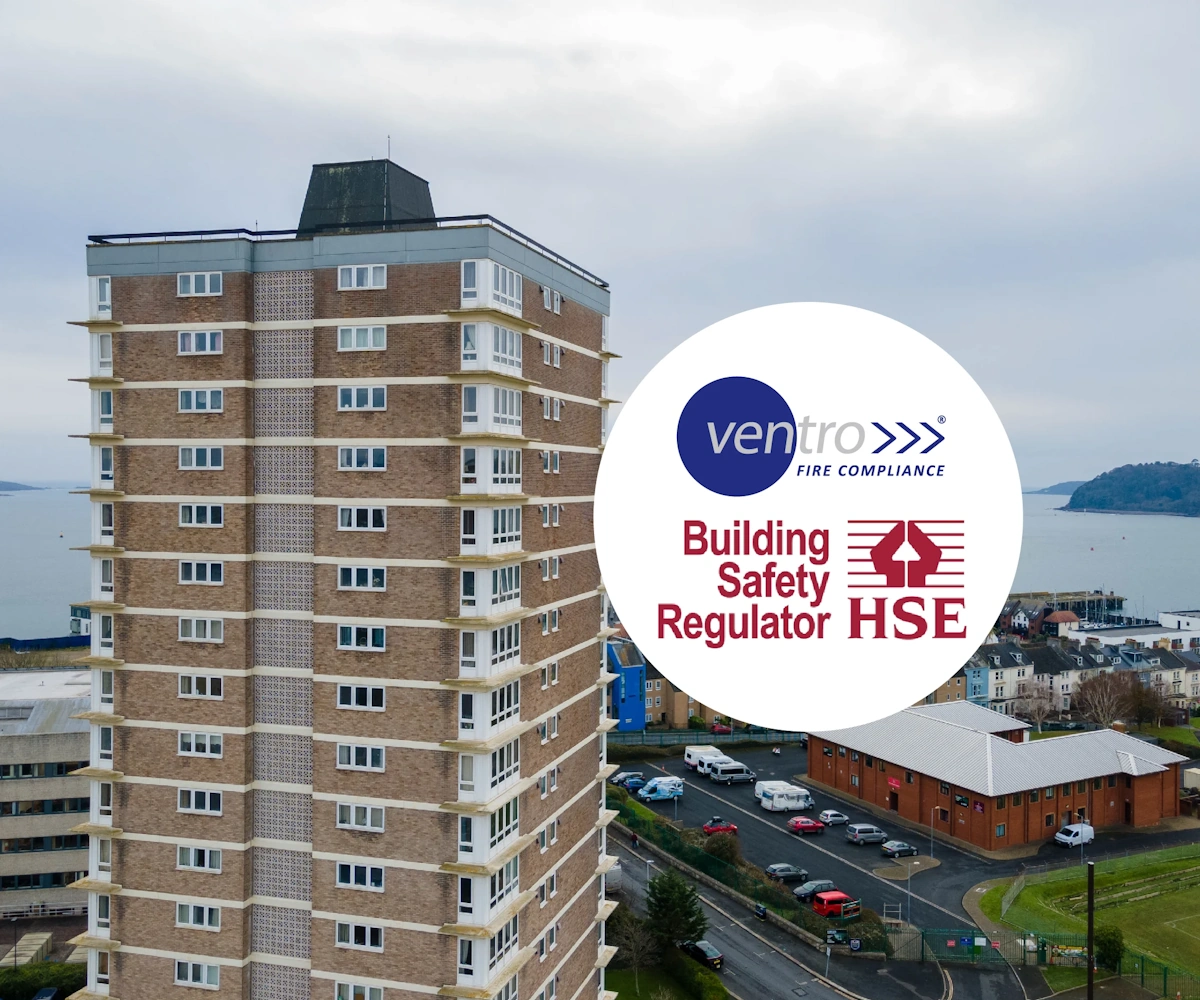The introduction of the Building Safety Act 2022 has undeniably been a much-anticipated event with the potential to drastically change the outlook of residential safety. The landmark act is partly based on the findings of Dame Judith Hackitt’s Building a Safer Future Report — an independent assessment of the UK’s building and fire safety standards prompted by the 2017 Grenfell Tower fire.
After a five-year journey through parliament and finally receiving Royal Assent on 28 April 2022, the Building Safety Bill has now become English law. While this is a significant step toward raising the bar for residential safety across the UK, the new safety regime means you need to adapt quickly to the new requirements.
While most provisions will only come into effect in 12 to 18 months, it’s essential for building safety teams and real estate owners to start getting ready today. This is to ensure the building remains compliant throughout the transition.
Below, you’ll find the key considerations to make now that the Building Safety Act is English Law.
The New Building Safety Act: An Overview
The 262-page legislation describes the measures, practices and requirements necessary to increase residential safety and building standards. The document also outlines the new roles and responsibilities of Safety Managers, Regulators and the Accountable Person (AP).
The act also specifies the terms of the remediations necessary to abolish existing fire safety hazards (such as unsafe external cladding), with a focus on high-rise residential buildings. The work should be carried out by the developers or landlords who were involved in the planning and construction of the building to reduce the burden on leaseholders.
The new regulatory framework will affect how residential buildings across the UK are run and how information is transferred between interested parties. For the AP and landlords, today is the best time to prepare for the upcoming changes.
Learn about the key considerations to make by checking out our Building Safety Act Guide to get a more in-depth look into the nuances of the new legislation.
The Act Is Introducing New Roles
One of the key provisions outlined in the act is the introduction of new roles and a change in responsibilities allocated to each figure. The changes have been introduced to strengthen the efficiency of each building’s safety management team through the following roles:
- Accountable Person - The AP and the principal accountable person (PAP) is the duty holder of an occupied building. Some of the key roles of the AP include applying for a Building Assurance Certificate, registering a building with the Building Safety Regulator, preparing the safety case and assessing building safety.
- Building Safety Regulator (BSR) - The BSR is in charge of overseeing the safety and standards of all buildings, boosting the competence of building companies and building control professionals, and leading the implementation of the new standards for high-rise buildings. The Act has named the HSE as the new BSR.
The final version of the Act scraps the mandatory requirement to appoint a Building Safety Manager to reduce the Building Safety Charges often befalling leaseholders.
There Are New Responsibilities for High-Risk Buildings’ Safety Regulators
In the UK, there are currently 12,500 residential buildings that are both high-rise and high-risk. The buildings in scope are the ones that contain at least two residential units, are occupied, are at least 18 metres in height and have a minimum of seven stories.
The AP of these buildings needs to register with a local BSR and submit regular safety cases and safety case reports.
While a safety case doesn’t replace other documents or safety measures (like risk assessments), it’s a framework designed to highlight the justified risks and hazards in a building, the measures taken to address them and the outcomes.
Safety cases should be kept up to date and should be more than a collection of documents, but rather a cohesive line of information that’s easy to access, review and use.
Most Measures Will Come Into Effect Within 18 Months — But You Should Prepare Now
While the new Building Safety Reform has only been an English law for less than three months, there’s a lot that needs to be completed to adapt to the new requirements.
One of the most important aspects is that high-rise buildings must register and apply for a Building Assessment Certificate. Once the AP has been appointed, they’ll be responsible for registering the building with the BSR.
The next step is to compile a building assessment request, where the AP will submit a range of information about the building, including:
- Safety case regime
- Safety case report
- Residents’ engagement strategy
- Fire risk assessment
- Major incident prevention plan
- Mandatory occurrence reporting system
- Details of the accountable person
The AP will also need to submit accurate information about the building’s address, height and the number of residential units. This process should be completed by existing buildings within the six-month transition period, while new buildings will need to apply for a certificate as soon as they become occupied.
It’s estimated that the HSE, which will act as the Building Safety Regulator, will take around five years to assess the existing high-rise buildings. After the initial assessment, routine examinations will happen every five years.
Developers and Landlords Will Absorb the Cost of Remediations
One of the aims of the recently-introduced Building Safety Act is to lift leaseholders and occupants from the burden of having to pay for remediations and rectifications of safety hazards.
The Act is set to achieve this by holding construction companies and developers accountable for putting people at risk through construction projects such as unsafe external cladding. As the construction industry is held liable, the Act also outlines a rectification regime, liability orders and prohibitions.
Alongside the measures outlined in the Building Safety Act, the UK government has also launched the Building Safety Pledge initiative, a commitment made by developers to remediate life-critical fire safety hazards in high-rise buildings above 11 metres. So far, 48 developers have already signed the pledge.
For the accountable person, it’s important to consider that — while construction companies are committed to fixing critical issues — only a small percentage of companies have the capacity and resources to do so. Liaising with construction companies and developers will become essential.
The Golden Thread of Information Will Become a Lifeline
The Golden Thread of information refers to a comprehensive and accessible digitally-stored line of information. Within each building, the Golden Thread is put in place by the people who are the duty-holders for a building. In most cases, these will include the AP and the BSR.
Beyond just being a collection of files, the Golden Thread aims to:
- Organise and make accessible, accurate information about the building to the safety management
- Help someone understand the building and keep it safe
The Golden Thread also focuses on ensuring that the information delivered is accurate and up-to-date, which is essential to managing a high-risk building and reducing human error.
New-Build Properties Will Come With a 15-Year Warranty
While the Building Safety Act focuses on addressing the mistakes made in the past and ensuring existing residential buildings are safe for their occupants, the reform is also in place to prevent future accidents.
According to secondary legislation that will come into effect within 12-18 months, developers of new builds and homes will also need to provide buyers with a 15-year warranty. This aims to reduce the costs on homeowners for unsafe work conducted on their properties. During the lifespan of the warranty, the developer will remain liable for fixing any issues related to their work.
Liaising With Residents Is More Important Than Ever
While the safety management team in each building will be responsible for maintaining and upholding the new safety standards, the Building Safety reform emphasises the importance of liaising with the residents and encouraging engagement.
That is why APs are required to prepare, follow, assess and review a comprehensive and justified ‘residents’ engagement strategy’, which will allow safety managers to involve leaseholders and occupants in building safety decision-making.
While the Act specifies that you must do so within a reasonable timeframe, starting to work on it now can help you make the Act’s transition period (during which a great range of safety-related decisions will be made) more efficient for you and the building’s residents.
Ensuring Your Building Is Compliant With the New Building Safety Act: Get Started Today
As frameworks and safety standards change, it can be hard to keep up with the different requirements and ensure you are compliant. Now the Building Safety Bill has progressed to become an Act, we want to equip you with all the information you need to get prepared for the law.
To help you along the way, we've created a helpful Building Safety Act Checklist so you can tick off the critical factors you need to consider when managing fire safety.


%20(1).jpeg)

%20(1).jpeg)

.jpeg)

